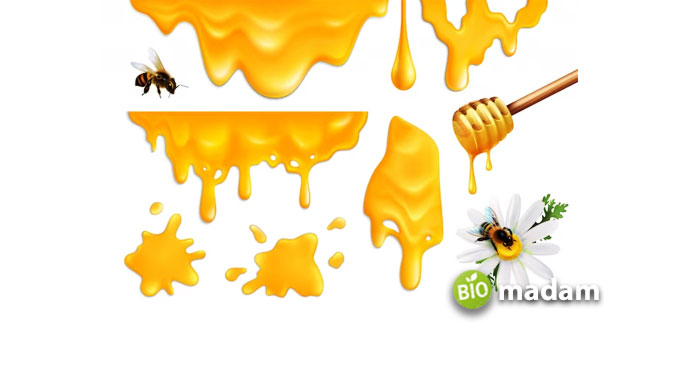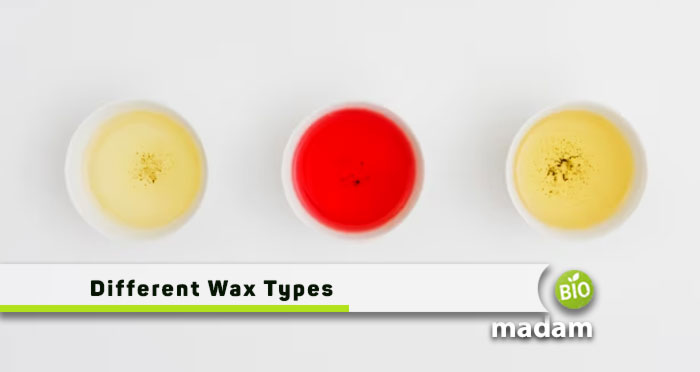Waxes, fats, and oils are often considered the same molecules. However, they differ from each other in composition and function. While all these molecules and compounds are lipids, they perform specific roles in different living organisms. Waxes are highly important to plants and animals because of their hydrophobic nature. One of the main functions of waxes in plants is to prevent them from drying by controlling evaporation. They contribute to several other operations in the body that we will explore further in the article.
What are Waxes?
Waxes are organic compounds that are malleable and lipophilic near ambient temperatures. They may be defined as esters of fatty acids besides glycerol.
Waxes comprise long-chain fatty acids connected to a long-chain alcohol through an ester molecule. Wax molecules are typically water-soluble and are solid at biological temperatures. Their hydrophobic nature enables them to work as water repellents on birds’ feathers and plants’ leaves. Their role in eukaryotes and prokaryotes is diverse, and they act as energy-storage spots in plankton. The biosynthesis of waxes in plankton helps them adjust their depth in the ocean.
Besides waxes in animals, plants, and fungi, some are of mineral origin, produced from lignite or mob. They develop due to fossilization exhibiting a late step in transforming vegetals into hydrocarbons.
Structure of Waxes
Waxes comprise water-resistant materials, including hydrocarbons, aldehydes, ketones, diketones, alcohols, sterol esters, terpenes, monoesters, and alkanoic acids. There may also be alkenes, branched alkanes, hydroxy-β-diketones, aliphatic alcohols, oxo-β-diketones, and methyl. Triterpenes are the most abundant waxes in the intracuticular layer.
They are commonly esters of alcohols compared to glycerol and long-chain acids. Hot alkaline solutions saponify wax esters, resulting in the formation of an alcohol and fatty acid. Waxes are soluble in ethers, chloroform, ketones, esters, and aromatic solvents. They have long carbon chains ranging between twelve and thirty-eight carbon atoms. The waxes are usually solid in a wide range of temperatures between 60 and 100°C. The nature and function of waxes vary greatly depending on their source.
Functions of Waxes
Waxes act as a water repellent in most organisms, contributing to one or another broader function. They are present in fungi, animals, and plants on different surfaces. Waxes are present on different types of leaves of plants and feathers of insects and birds. They also act as energy-storage locations in plankton. Eventually, these planktons become a source of petroleum and oil after decades in the deep seas.
Waxes have various biological and industrial functions depending on their properties. Let’s tell you more about the functions of waxes in different categories:
Seals and Polishes – Beeswax
Beeswax comes from bees’ abdomen and may vary in color depending on the flowers the bees have been to. Bees use this type of wax to form hives. Ancient Egyptians used beeswax to treat painted walls and as a waterproofing agent. Today, beeswax is an essential component of the cosmetic and pharmaceutical industry. It is also used as a modeling material besides producing candles, seals, and polishes.
Varnish Industry – Shellac Wax
Another type of wax produced naturally is Shellac or lac wax. It comes from a cochineal insect commonly found in India. It contains free fatty alcohols, acids, fatty esters, and hydrocarbons. It is a widely used ingredient in the varnish industry and is often used instead of carnauba wax.
Polish Industry – Insect Wax
As the name suggests, insect wax is also secreted by insects on tree branches. Around 1500 insects produce 1 gram of insect wax, also known as Chinese wax. It comprises hydrocarbons, alcohols, and free acids. Insect wax is an important component of polish and candles.
Besides insects, animals also produce wax to protect themselves from the environment and contribute to industrial uses.
Candle Making – Whale Spermaceti
Whale spermaceti refers to the wax secreted by the adipose tissues of the sperm whale. A 15-meter animal would contain three tons of wax in the frontal organ. The spermaceti contains triglycerides, fatty acids, and free alcohol. Purified spermaceti is often fused with beeswax, oils, and fatty acids. It has been used to prepare medicines since the 15th century. However, animal conservation authorities have prohibited the capturing of whales to obtain spermaceti, and now it is synthetically produced for use in medicine and candle making.

Fabric Industry – Lanolin
Lanolin is one of the most common types of waxes used globally. It is produced by sheep’s sebaceous glands and collected from crude wool. Lanolin comprises sterols and triterpene alcohol esters, fatty esters, sterols, terpenes, and free alcohols. It is used in dermatology and cosmetics with wide application in the lubrication, ink, and fabric industry.
Some algae and plants also secrete waxes for protection and usage in other industries.
Food and Cosmetics – Carnauba Wax
Carnauba wax, also called the queen of waxes, comes from a Brazilian palm tree. It gets its name because of its high quality and rarity. One Brazilian palm tree secretes only 100 grams of carnauba wax in one year. The leaves are dried under the sun to remove the thin layer of wax coating by whisking and beating the dried leaves. The wax constitutes free alcohol, acids, fatty esters, and hydrocarbons. It has the highest melting point among all waxes and is mixed with beeswax to produce polishes. However, its vast applications are not limited to the polish industry. It has a significant role in the food industry in producing fruit coatings and the cosmetic industry.
Stabilizing – Candelilla Wax
Candelilla wax comes from shrubs and bushes in Mexico. The wax comes to the surface on boiling the plant components. It contains esters, hydrocarbons, alcohols, resins, and free fatty acids. Candelilla wax has applications in pharmaceutical and cosmetic companies. It also acts as a stabilizer and texture improver in the food industry.
Ointments – Japan Wax
Japan wax gets its name from its significant usage in cosmetics and ointments in Japan. It contains free alcohols, long chains of dicarboxylic acids, and palmitic acid triglycerides. However, this wax becomes rancid over time.
Carbon Paper Inks – Ouricouri Wax
Ouricouri wax is a lesser-known wax with wide applications in polishes, carbon paper inks, and mold-release lubricants. It comes from the ouricury palm tree, and the physical properties of the ouricury wax resemble carnauba wax.
Coatings – Jojoba Oil
Jojoba wax is also often referred to as jojoba oil as it has a low melting point of around 7°C. It comes from the seeds of the Jojoba tree cultivated in California, Arizona, and parts of Mexico. It contains alcohols with long-chain fatty acids comprising thirty-eight to forty-four carbons. Its resistance to oxidation makes it an ideal choice for use in the cosmetic industry and the preparation of candles, polishes, and coatings.
Fruits and Vegetable Coating – Rice Bran Oil
Rice bran oil comes from rice bran and contains long-chain alcohols, fatty acids, and unsaponifiable matter. It comprises fruit and vegetable coating, chocolate enrobers, and lipsticks.
The last type of naturally produced waxes includes mineral waxes from mineral sources.
Electrical Insulation – Montan Wax
Montan wax comes from the solvent extraction of brown coal or lignite in preserved form. This wax has characteristics similar to plant-based waxes. Montan wax contains resin, wax, and asphalt, comprising long-chain esters, hydrocarbons, alcohols, ketones, and long-chain alcohols. It is also resistant to oxidation and is used in paper, lubricants, and electrical insulator production.
Deodorants and Adhesives – Ozocerite
Ozocerite comes from lignite beds in Iran, Russia, and the United States. It contains hydrocarbons and is widely used in producing lipsticks, polishes, deodorants, and adhesives.

The Bottom Line
Lipids, including waxes, saturated and unsaturated fats, are essential components of living cells. Waxes contribute to protecting organisms, predominantly plants, from losing water through evaporation and transpiration. Besides plants, waxes also contribute to protecting insects from their environment. Different types of waxes are obtained from plants, animals, and minerals that have applications in various industries. They are used in polish, candle-making, cosmetics, and the pharmaceutical industry.
FAQs
What is the function of waxes in biochemistry?
Waxes have similar functions in biochemistry that they perform in living organisms. They improve spreadability, hydrophobicity, and metabolic stability.
What is the difference between fats and waxes?
Fats and waxes are often confused due to their similar properties. However, they vary in their physical and chemical properties. Fats comprise esters of fatty acids with glycerol compared to waxes with esters of fatty acids other than glycerol.
What is the common use of waxes in pharmacy?
Waxes have wide applications in pharmaceutical production, from tablets to capsules and suppositories. At the same time, they are also used in the cosmetic industry to produce lipsticks, soaps, creams, balms, and hair removal.
What is the formula of wax?
The basic formula of an alkane paraffin wax is CnH2n+2, with a chemical composition of hydrocarbons. The branching impacts the properties of the waxes.
What are waxes in liquid examples?
Waxes are produced from animals, plants, insects, and minerals; some are in liquid form. Examples of waxes in liquid form include jojoba oil and rice bran oil, having low melting points.

Meet me; I am Paulina Zaniewska, who’s more hooked on providing the best health blog. I’ve always been so determined to compete as a nutritionist, and here I am, done with a Master’s in food technology. My brilliant performance throughout encouraged me to help people.

